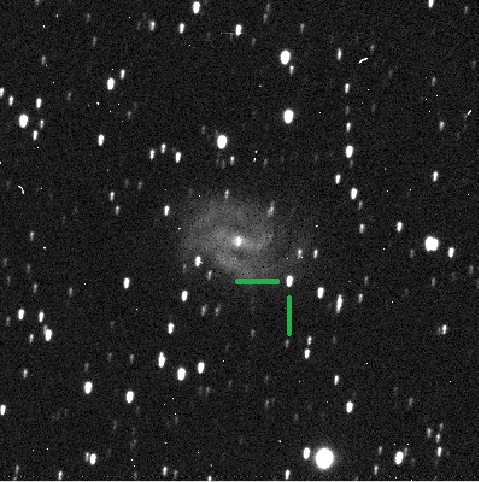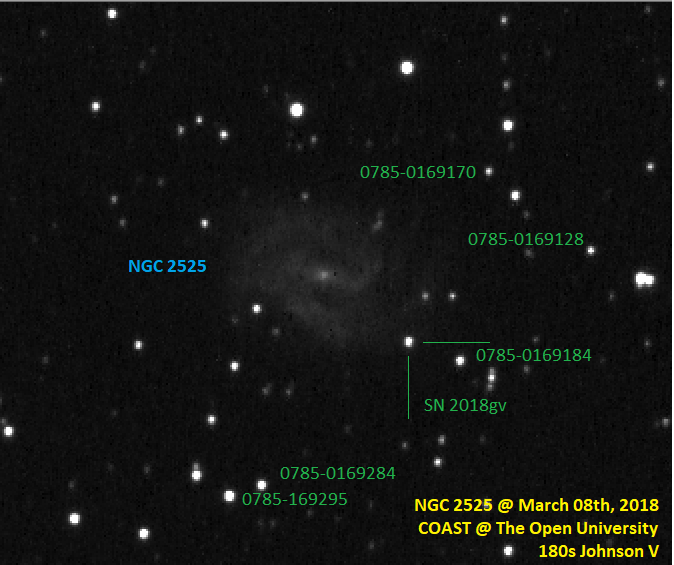Supernovae
List of recent Supernovae observations published @ www.rochesterastronomy.org
SN |
Date |
Host Galaxy |
Link |
|---|---|---|---|
| SN2017dfc | April 09th, 2017 | NGC 5055 (M63) | http://www.rochesterastronomy.org/sn2017/sn2017dfc.html https://www.flickr.com/photos/snimages/albums/72157630536353858 |
| SN2017eaw | April 14th, 2017 | NGC 6946 | http://www.rochesterastronomy.org/sn2017/sn2017eaw.html |
SN 2018gv in NGC 2525

March 08th, 2018, 01:22:15 UT
C14, f=3800mm, SBIG STL1001E, Johnson R
COAST @ The Open University / Tenerife

March 08th, 2018, 01:22:15 UT
C14, f=3800mm, SBIG STL1001E, Johnson V
COAST @ The Open University / Tenerife
SN 2018gv has been detected nearly 3 weeks before the maximum early February. Greatest brightness was about 12.7 mag.
Now it looks like to be about R: 14.79 +/- 0.01; V: 13.76 +/- 0.01; B: 14.55 +/- 0.01, ergo B-V = 0.79; V-R=1.03
An other star bites the dust - Supernova SN2012AW within NGC 3351 / M95. Discovered by Paolo Fagotti, Bastia Umbra, Italy on March 16th, 2012 UT 20:38 reported as object of R=15 magnitudes. More infos can be found: here

Comparison of image from March 20th, 2012 (left) with Digital Sky Survey (right) clearly confirms SN2012aw. (Copyright: STScI, ROE, AAO, UK-PPARC, CalTech, National Geographic Society. Full copyright notice) The strange background patterd on left image is caused by the bright luminosity of Mars which is closely located to the field of view.
I recorded also R, B, G chanels which I hope to use to perform photometric measures of the brightness of the SN in different chanels and in order to combine this data to a RGB-L image.
Below you find my current findings for the light curve of SN2012AW for the timeframe of March 20th, 2012 to March 29th, 2012. I choose to measure differential magnitudes versus star UNSO B1.0 1017-1098400 which looks like to have pretty closest brightness and therefore is a good candidate to compare.
More about supernovae in general can be found for instance here (Wikipedia)
